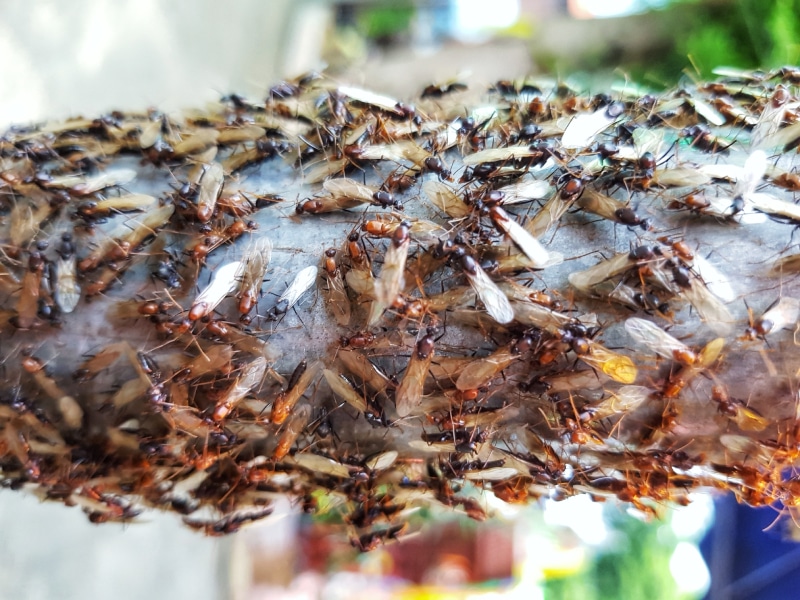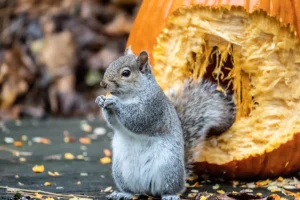Home / Blog / Everything You Need To Know About Termite Swarmers
Everything You Need To Know About Termite Swarmers

Scientifically reviewed by Daniel Baldwin, BCE, CCFS, CP-FS
-Published on April 15, 2020
-Updated on July 13, 2023
Termites are known for chewing through wood and potentially causing thousands of dollars to damage a home. Part of what makes them so effective is their small size and preference for living in darkness while consuming wood materials, which makes them difficult to notice until it’s too late. However, most are unaware that there are actually two types of termites: workers and swarmers. This guide will discuss what they are and how you can identify signs of their presence and take action before extensive damage is caused to your property by worker termites.
What is a termite swarmer?
Termite swarmers are the members of a termite colony that can fly. Their job is to find new locations for colonies to live in. Once they’ve identified a suitable home, swarmers reproduce to start the new colony and their wings fall off.

What do termite swarmers look like?
A termite swarmer or swarmer bug has six legs, four wings, and straight antennae. The straightness of their antennae is a good way to tell them apart from carpenter ants, which generally display bent antennae.
Typically, termite swarmer bodies’ segments are covered by their wings and may be dark brown, black, red, tan, or beige, depending on the species.
How big are termite swarmers?
Termite swarmers are often the biggest insects in a termite colony. Sizes vary by species, but most are around one inch long.
How do I know if I have termite swarmers in or near my home?
Termite swarmers are attracted to light. As a result, you’re more likely to see them near outdoor lighting fixtures on your home or in your landscaping. Some other signs of infestation include:
- Intricate patterns in wood that look like mazes
- Hexagon-shaped, pellet-like droppings
- Hollowed-out or tunneled wood
- Discarded wings
- Damp spots on wood that look like moisture damage
- Small structures in the mud called mud tubes or leads, measuring about the width of a pencil
- Loose tiles and creaking floors due to termites damaging the subfloors
- Wood shavings or powder from termites eating through the wood
When is termite mating season?
Termite mating generally occurs in the springtime once soil temperatures rise to around 70 degrees Fahrenheit.
Termite swarmer life cycle
The life of a termite begins with an egg laid by a queen, which can produce thousands of eggs every year. Hatching termites emerge as nymphs. Worker termites in the colony feed the nymphs while they grow.
A nymph will molt several times and become one of the following:
- Worker termites: Worker termites lack eyes and prefer to consume their food in darkness. Their job is to eat wood and other sources of cellulose, which they regurgitate for larvae to feed on. The workers cause the most damage to homes and other sources of wood.
- Soldier termites: Soldier termites have larger, more well-defined heads than worker termites and are easy to recognize due to their big jaws. Their job is to keep threats like ants out of the termite colony.
- Swarmer termites: The flying termites that identify locations for new colonies and establish them by breeding.
When a termite swarmer nymph grows wings, it becomes an alate, joins a swarm, and begins looking for new places to set up colonies.
Swarmers then break into male and female pairs and lose their wings, becoming dealates. These pairs serve as the kings and queens of new colonies. Once they have found a place to establish a colony, they will reproduce and start the termite life cycle over again.
Quality termite control
Subterranean termites are extremely destructive insects. When you see swarmers or notice other signs of termites, contact Hawx Pest Control to protect your home. Our team of expert technicians uses industry-leading termite control solutions to address current infestations and offer guidance on preventing future ones. Contact us for a free estimate today and help protect your home from termite damage.
Related Articles
Visit our blog to learn more.
→






